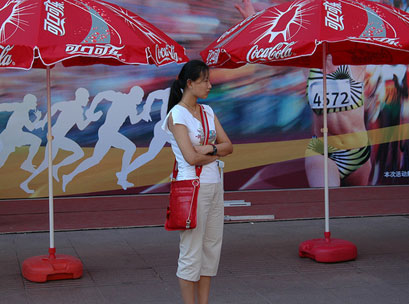The global retail and consumer goods industry will be looking to Asia Pacific to drive growth through to 2015 and the rise of online retailing will be the highest growth segment, according to findings revealed in a new report from PwC.
The PwC report ‘2012 Outlook for the retail and consumer products sector in Asia’, produced in cooperation with the Economist Intelligence Unit, forecasts the Asia Pacific’s retail and consumer industry grow at an average of six per cent from 2011 through 2015, remaining way above all other regions.
By comparison, North America and Western Europe are expected to average growth of just one per cent during the same forecast period.
In value terms, retail sales in the Asia Pacific region are expected to reach US$6.6 trillion this year and US$10.5 trillion in 2015. With the global economic outlook appearing uncertain, Asia’s rate of expansion is expected to be somewhat subdued in the near term. However, fundamental trends in Asia’s market, most notably rising incomes and the rise of the middle class, will ensure that the industry expands at a healthy pace over the medium-to longer-term in Asia, according to PwC.
“Over the past decade we have witnessed a fundamental shift in spending patterns in Asia Pacific, and this shift is shaping the development of the industry worldwide,” says Carrie Yu, PwC’s retail and consumer leader for China and Asia Pacific.
“Industry players are well aware that their growth targets can only be reached in Asia Pacific, and are therefore adjusting their investment strategies accordingly to reflect the growth of the market in this part of the world.”
The highest growth segment is expected to come from online retailing which has taken off at a lightning speed, thanks to the rise in social media and improvements in telecommunications infrastructure and payment and security systems. Online sales are expected to rise by an average of 20 per cent annually in Asia in the near term and by as much as 40 per cent a year in some well-wired countries like Japan; while China is expected to drive the overall rapid rate of growth.
“Currently, over 36 per cent – or 485 million of China’s population – have internet access. That number is larger than the entire population of the United States!
“Suffice to say there’s a huge online potential that has yet to be tapped in China,” says Yu. “What’s more, Chinese online shoppers have a few unique characteristics compared to their counterparts in other countries. Most notably, they’re shown to be the most committed shoppers. This is supported by a recent PwC global survey on multi-channel retailing where 70 per cent of Chinese respondents said they shop on-line in all product categories, compared to 40 per cent of US and European respondents,” added Yu.
As a result, retailers, local and foreign, are increasingly looking towards multi-channel retailing as a new revenue source. According to industry analysts, online sales in China grew by 97.3 per cent year-on-year in 2010 to US$77.78 billion.
As expected, China remains the retail powerhouse in Asia. The rate of growth, however, is expected to slow to about 9.5 per cent and 9.8 per cent in 2011 and 2012 respectively. The steadier pace comes in the absence of stimulus measures which helped drive sales to 19 per cent in 2010. Chinese consumers, on the other hand, are fuelling the retail sales growth in other Asian markets like Hong Kong (projected growth of 4.5 per cent in 2011), particularly in the health and beauty and luxury goods sector.
While China still presents an attractive market, foreign retailers are beginning to set their sights on other markets in the region including Vietnam, Thailand, Indonesia and the Philippines, where growth is expected to register more than five per cent annually between 2011 and 2015.
By comparison, growth in India, Asia’s other retailing giant, looks modest. India’s retail sales are forecast to drop to 4.4 per cent this year before levelling out to five per cent annually until 2015. The phasing out of government incentives and the slowing Indian economy has resulted in less consumer credit being available.
Over in Japan, the strong yen and slowing exports combined with the devastating impact of the earthquake and tsunami in March 2011 are likely to push retail sales down by 0.8 per cent this year.
Still, Asia remains the place to be, concludes PwC.
“While the global outlook is weak in the short-term, and Asia will not be immune to it, Asia’s economies collectively will be the world’s fastest growing – growing at nearly seven per cent (ex Japan), compared with a world GDP growth outlook of only two per cent,” says Ross O’Brien, Director at the Economist Intelligence Unit.
“Moreover, Asia – and Asian consumers – have shown a remarkable resilience in the face of economic crises, and are able to ‘bounce back’ quickly. Asia’s retail markets will thus lead global growth next year as well – 5.6 per cent in 2012, speeding up to 6.4 per cent annual growth by 2015.”
Other key growth segments:
Luxury goods brands are pinning an increasing amount of hope on Asia
China will be the top contributor to global growth in luxury sales and Chinese tourists are fuelling demand in key global cities, accounting for 56 per cent of China’s luxury consumption.
Hong Kong will remain an important market for luxury branded goods in 2011-2015.
Asia’s fashion and apparel market will continue to grow quickly
Rapid expansion by Western casual and sportswear makers on the back of buoyant growth in fashion and apparel.
Demand for fashion and apparel in India, where younger and middle class consumers are driving growth, will nearly double from 2010 to US$13.32 billion in 2015.
Rising demand for health foods
Sales of functional foods that promise health benefits are rising in Asia, driven by increased prosperity and health awareness.
International and local food and beverage brands are actively engaged in research and development (R&D) and marketing of health products, though foreign companies in China still have an edge in quality and supply stability.
Asia Pacific’s rising affluence will drive the growth for fast-moving consumer goods (FMCG) firms over the next several years
Demand for FMCGs will grow by a strong 12.7 per cent in China in 2012, and then moderate through the rest of the forecast period.
Rapid growth in India’s toiletries and cosmetics market will create opportunities for new players. New Japanese and South Korean brands are already making headway in Hong Kong’s cosmetics market.






